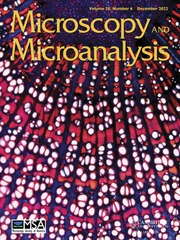Article contents
Characterization of Sc2O3&CeO2-Stabilized ZrO2 Powders Via Co-Precipitation or Hydrothermal Synthesis
Published online by Cambridge University Press: 06 August 2013
Abstract
As the presence of Sc2O3 and CeO2 is known to largely enhance the ionic conductivity in the temperature range of 600–800°C, compared with the conventional yttria-stabilized ZrO2, Sc2O3&CeO2-stabilized ZrO2 provide its applicability as electrolytes in solid oxide fuel cells. The current study introduces the methodology to synthesize Sc2O3&CeO2-stabilized ZrO2 powders by using co-precipitation technique or high-temperature hydrothermal reaction, and further describes the structural characterization of the zirconia powders synthesized by the above-mentioned two methods. The co-precipitation technique was found to allow obtaining powders of cubic phase, whereas high-temperature hydrothermal synthesis results in the presence of a monoclinic phase as well. The scanning transmission electron microscope observations also confirm that the size of the synthesized ZrO2 powders in this study is found to be much smaller than that of commercially available powders.
Keywords
- Type
- Research Article
- Information
- Copyright
- Copyright © Microscopy Society of America 2013
References
- 7
- Cited by




